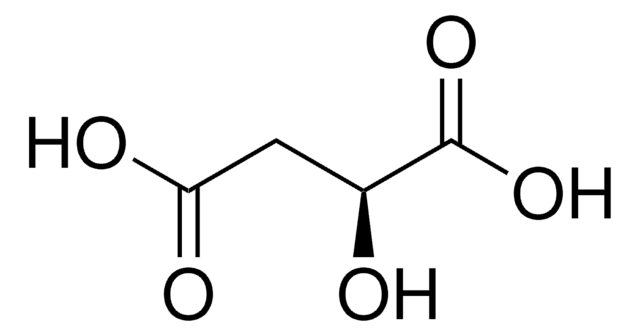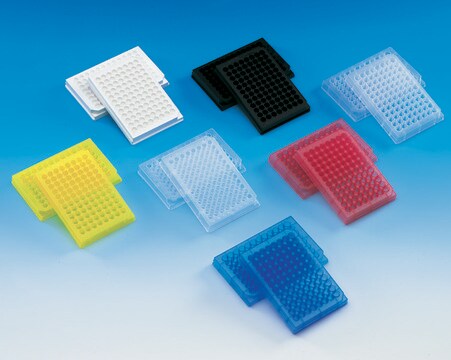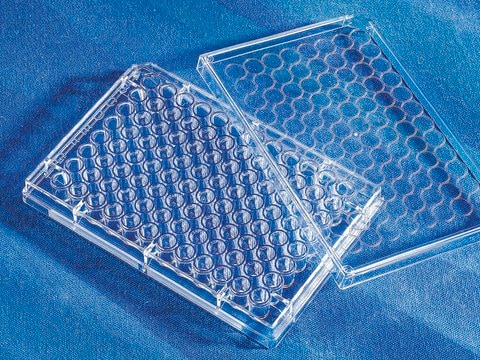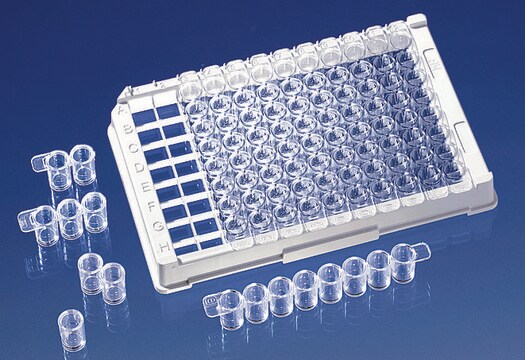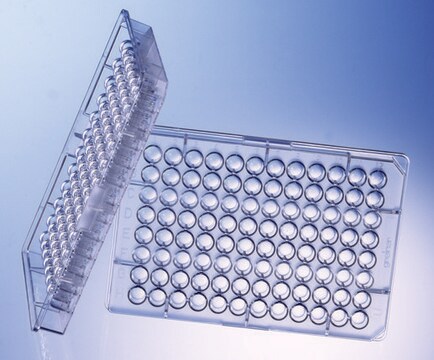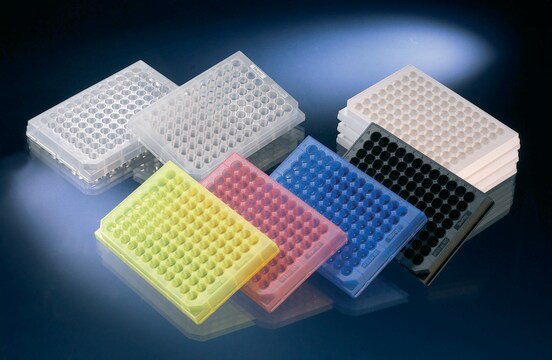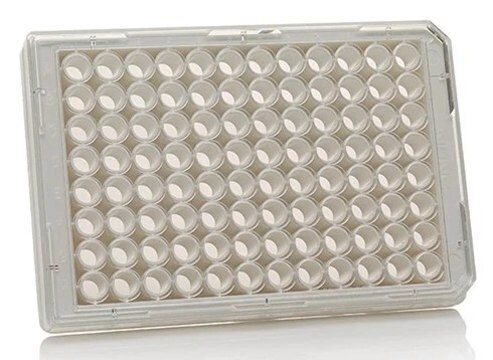M9410
Nunc-Immuno™ MicroWell™ 96 well solid plates
96 well MicroWell™ MaxiSorp™ flat bottom plate, pinchbar design
Synonyme(s) :
96 multiwell plates, 96 well microplates, 96 well microtiter plates, 96 well plates, ELISA plates, cell culture plates, immunoassay plates, tissue culture plates
About This Item
polystyrene
Produits recommandés
Matériaux
flat bottom clear polystyrene wells
polystyrene
Stérilité
non-sterile
Caractéristiques
lid: no
lid: no
skirt
Conditionnement
case of 60 ea
Fabricant/nom de marque
Nunc 442404
Plaque/Plateau, L × l
128 mm × 86 mm
Taille
96 wells
Superficie
2.7 cm2
Capacité totale
400 μL
Volume maximum des puits
400 μm
Volume de travail
350 μL
Adéquation
suitable for (quantitative/qualitative solid phase immuno assays (e.g. ELISA) and binding assays)
Type de liaison
(MaxiSorp surface)
high binding surface
Vous recherchez des produits similaires ? Visite Guide de comparaison des produits
Description générale
- Raised rims on the wells
- Certified reproducibility of binding
- Alphanumeric orientation system
- Fit standard equipment
- Barcodes available on request
Surface Treaments:
- PolySorp® surface treament, high affinity to molecules of a hydrophobic nature
- MediSorp™ surface treament, surface chemistry between PolySorp and MaxiSorp, provides low background signal with samples containing serum
- MaxiSorp™ surface treament, high affinity to molecules with mixed hydrophilic/hydrophobic domains
- MultiSorp™ surface treament, high affinity to hydrophilic molecules
Application
Informations légales
Faites votre choix parmi les versions les plus récentes :
Certificats d'analyse (COA)
Désolés, nous n'avons pas de COA pour ce produit disponible en ligne pour le moment.
Si vous avez besoin d'assistance, veuillez contacter Service Clients
Déjà en possession de ce produit ?
Retrouvez la documentation relative aux produits que vous avez récemment achetés dans la Bibliothèque de documents.
Les clients ont également consulté
Notre équipe de scientifiques dispose d'une expérience dans tous les secteurs de la recherche, notamment en sciences de la vie, science des matériaux, synthèse chimique, chromatographie, analyse et dans de nombreux autres domaines..
Contacter notre Service technique

